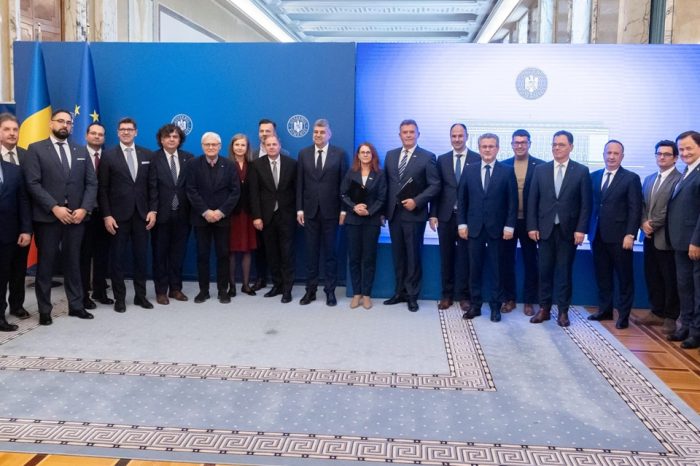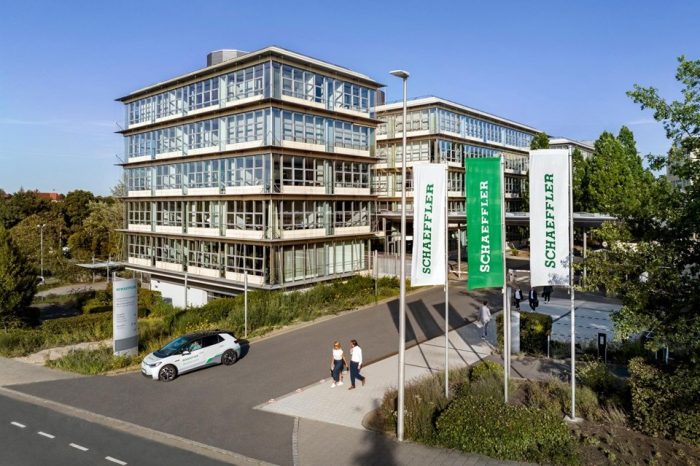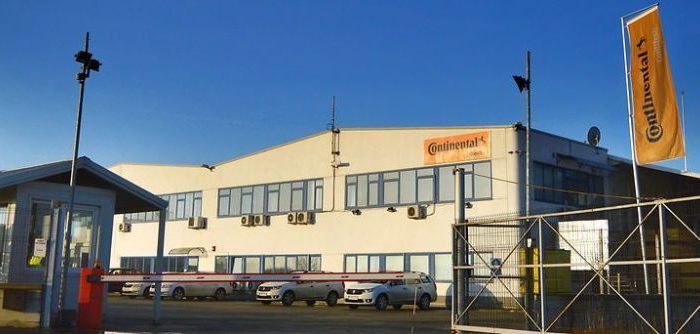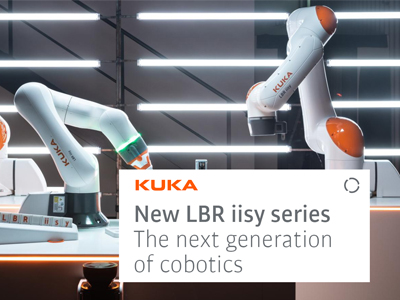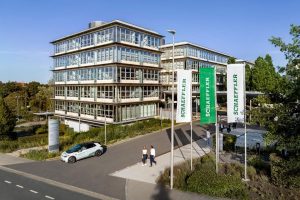Marian Bolboe, Schaeffler Romania: “We will introduce sustainable solutions that will reduce energy consumption by 70%”
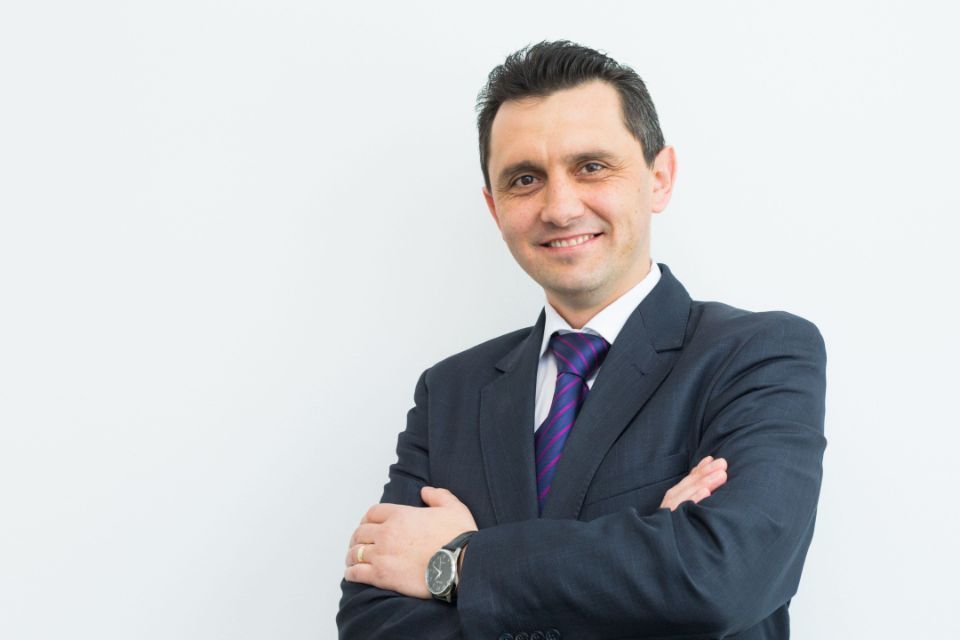
“If you want talented, engaged employees, who meet our high standards, you cannot just look at the labour market, but you must be actively involved in its development. We have done this through multiple programs and projects. Specifically, by establishing the Kronstadt Dual Vocational School and three technical master’s programs with the Transylvania University. Also, we introduced internship programs for pupils and students and the Trainee program in which we develop our young potentials,” Marian Bolboe, Plant Manager Automotive, Schaeffler Romania, told Automotive Today.
“At our plant, we will introduce sustainable solutions such as electric production machinery, optimization of the logistic chain and modernization of the lighting system in production areas that will reduce energy consumption by 70% with an increase of lifespan by 3.5 times.”
What are the company’s expectations regarding the evolution of the car industry in 2021?
We live in very challenging times, characterized both by far-reaching societal, geopolitical, and macroeconomic changes and great uncertainty. In many areas it is difficult to make long-term plans. Even in the short to medium term, it is becoming increasingly important for us to be highly flexible and adaptable in order to maintain and extend our own competitive edge. The coronavirus crisis has made these things abundantly clear to us.
It has also made us more acutely aware of the most pressing future trends: climate change, the call for greater sustainability, the growth of digitalization and automation, demographic change, and emerging new forms of mobility.
Our positioning as an automotive and industrial supplier operating worldwide has proven to serve us well in difficult times and has helped us weather the crisis relatively well. We used the year of crisis to hone our corporate strategy and orient it toward current challenges and opportunities. With Roadmap 2025, our main focus is to make us even more competitive and fit for the future. In the Automotive Technologies division, this essentially means developing the already excellent product portfolio increasingly towards electric mobility and chassis applications.
The significant decline in global automobile production has affected us as well. But we are confidently looking ahead to the coming year and anticipate relatively robust growth. On the group level Schaeffler sees in the first quarter 2021 considerable recovery of Automotive Technologies. This is based, in particular, on a raised market estimate in terms of global growth in the production of passenger cars and light commercial vehicles. The Schaeffler Group currently anticipates an increase in global production of passenger cars and light commercial vehicles by approximately 10 percent to 82 million vehicles produced. However, the economic environment remains challenging in times of the pandemic, and we do not expect to reach pre-crisis levels until after 2022.
What are the challenges you are currently facing?
Among the current challenges, the increased labour market volatility needs to be addressed heads on. People are increasingly mobile and open to relocations and accessing new career opportunities even outside the borders of our country. As a preferred employer on the local labour market, Schaeffler Romania constantly adapts its job opportunities and career development strategies in accordance with the new employee requirements and market standards. Only by being flexible and anticipative, we are able to maintain our position as a preferred choice, especially in this unstable labour market, when people are looking for reliable jobs.
In a different register, the globalization and megatrends bring also new challenges beside the indisputable advantages in terms of their business potential. While still struggling to diminish the economic effects of the health crisis, we need to also adapt to new market conditions. Manufacturing as such depends on exports.
It is enough to crack a link in the supply chain and the business process is paused. In Romania, the Auto Industry represents approximately 15% of Romania’s GDP. If it suffers, the other industries, such as tourism, transportation, etc. also suffer immediately. Under these conditions, companies must be able to easily adapt to increasingly unpredictable changes in markets; be flexible and react quickly to change. This can only be done through continuous innovation, an area in which, I proudly say, Schaeffler is top class, as proven by the ranking of the most active patent applicants published by the German Patent and Trademark Office (DPMA), where Schaeffler is again second.
What are your priorities for developing the business in 2021?
A top priority is our care for the employees. Both in a pandemic and non-pandemic context, Schaeffler Romania is aware that the most important resource for ensuring success is represented by its colleagues.
The company accepted almost 10 years ago the challenge to invest in the educational development of the new generations of employees, by developing the technical know-how of vocational school graduates, our “nursery for blue collars”, as well as that of students in the programs with the Transylvania University of Brasov, our “nursery for white collars”. Schaeffler Romania understood that if you want talented, engaged employees, who meet our high standards, you cannot just look at the labour market, but you must be actively involved in its development. We have done this through multiple programs and projects. Specifically, by establishing the Kronstadt Dual Vocational School and three technical master’s programs with the Transylvania University. Also, we introduced internship programs for pupils and students and the Trainee program in which we develop our young potentials.
Another priority for us is to achieve the sustainability and environmental goals. Beyond the desire to produce and deliver the highest quality parts at a very competitive price, we aim to reduce the carbon footprint by 10% this year. For that we introduced a “Reduce Carbon Footprint” initiative that is closely linked to Schaeffler´s global commitment to United Nations to serve as one of the 50 Sustainability & Climate Leaders worldwide.
At our plant, we will introduce sustainable solutions such as electric production machinery, optimization of the logistic chain and modernization of the lighting system in production areas that will reduce energy consumption by 70% with an increase of lifespan by 3.5 times.
The business priorities, like increase of production in the location in Brasov, new and competitive products for both the automotive and the industrial sector remains as always in our strategic agenda.
What would be the most important objectives for Schaeffler Romania on medium and long term?
If we have already talked about the Roadmap 2025, the long-term strategy of Schaeffler, I will say that in the very short term of 2021-2023 in the Automotive plant in Schaeffler Romania we plan an increase of production by 15% compared to 2019, based on integration of new products such as Balancing Shafts and Camshaft Phasers.
We also aim to increase the competence level of our R&D specialist in the Engineering and the Testing Center, as well as the volume of activities there, aligned with the growth of the business in Schaeffler Romania. Good examples are the cam shaft phasing system for which the local R&D team performs a broad range of activities from product development to testing. The balancer shaft or other valvetrain components are not left behind, with more know-how transferred and used locally.
What are your projects dedicated to e-mobility and electrification?
The trend towards e-mobility, alternative mobility concepts, connectivity, and autonomous driving will impact both our products and our business models. Vehicle connectivity is increasingly valued by consumers. At the same time, we are seeing a growing preference for new electrified powertrain technologies as opposed to conventional combustion engines.
Within the Automotive division, we clearly notice the tendency of structural modification of the propulsion types. If currently 88% of cars are equipped with internal combustion engines, it is projected that in 2025 the percentage will decrease to 50%, and in 2035 approximatively 50% will be full electric, 35% hybrid and only 15% with internal combustion. Thus, we expand our Schaeffler product portfolio from solutions, ranging from those aimed at optimizing internal combustion engines, to hybrid or full electric propulsion solutions.
On the Group level, Schaeffler is globally increasing its involvement in hydrogen technology. It offers enormous potential in this area, both in terms of energy storage and emissions-free drive solutions. Our core expertise in materials technology, forming technology, and surface technology will enable the efficient high-volume production of key components for the future hydrogen economy.
What to expect from your industry in 2021 in terms of development, how much room is for improvement and which are the aspects to be considered in this respect?
The year 2021 is a year with very low inertia, largely due to the COVID health crisis. Business is no longer running on set tracks. Companies can accelerate only if they optimize their manufacturing processes as well as processes in the supply and distribution chain. This is only possible through a constant improvement through innovation and flexibility in processes.
The level of digitalization plays an essential role and can easily make the difference between the success and failure of a company. Digitization is not an end in itself but a means by which you can optimize your processes, to react easily to deviations but especially, by integrating expert systems, to go from a reactive mode to a predictive mode in any area of the business. The huge volume of data retrieved and stored from interconnected machines must be used predictively. So, there is room for improvement beyond the 3-5% that a Lean Production process may offer annually. Schaeffler Romania understood that the lean production is a key concept.
Continuous improvement should not only concentrate on financial effects but also on people´s lives.
I especially speak about the expansion of general and technological knowledge and improvement of the working conditions. So, there remains a lot of room for improvement.
How do you see the evolution of the Romanian automotive industry during the COVID-19 recovery?
The numbers luckily show us a tendency of a slightly increase in production comparing to 2020. The markets remain volatile though and customers pose increasingly diverse requirements. It is therefore risky to bet on a figure. Considering the current situation of the Romanian economy, I would appreciate – with reservations – a year 2021 with an increase of about 1-2 % over 2020 for the Romanian automotive industry.
Looking from farther away, Romania is certainly in a very good geo-strategic position. It has a tradition in the automotive industry, the big universities in Romania are gaining more ground in the academic ratings, so I would say that the premises are established to ensure constant growth. Let us not forget that the Romanian car industry is well anchored in the global realities, not only in the local ones. The Romanian companies are part of the worldwide corporations producing cars or components. That is also why any global imbalance first affects the car industry and then the other branches of the economy. Therefore, the car industry in Romania is in fact an economic barometer. As a friend once told me, “Tell me how the car industry is doing so I know how many customers I’ll have in the restaurant.”
We therefore need to do all we can to ensure an upward trend of the automotive industry. This will be strongly influenced by the support that the Romanian state will provide in the future both from a legislative and fiscal point of view. If the Romanian state will support the effort of companies in the automotive industry on their way to digital development and transformation of “green” mobility, then all economic branches will benefit and it’s a Win-Win for all.


